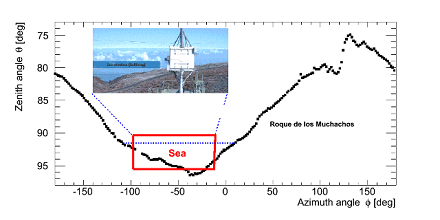
The flavor composition of the neutrino flux detected by IceCube is consistent with equal fractions of all neutrino flavors (electron-, muon- and tau-neutrinos). Of particular interest is the identification of tau neutrinos (ντ), which are only expected to be produced in negligible amounts in astrophysical accelerators, but should appear in the flux detected by IceCube due to neutrino flavor change. Up to now, there has been no clear identification of tau neutrinos at high energies, so the detection of tau neutrinos will be very important from both the astrophysical and the particle physics point of view.
The detection would give new information about the astrophysical flux as well as serving as an additional confirmation of the astrophysical origin of the IceCube high energy diffuse neutrino signal. It also would shed light on the emission mechanisms at the source, test the fundamental properties of neutrinos over extremely long baselines and better constrain new physics models which predict significant deviations from equal fractions of all flavors.
Imaging Air Cherenkov Telescopes (IACTs) such as MAGIC, VERITAS and H.E.S.S. could have the capability to detect ντ with energies in the range of petaelectronvolts (1015 eV) by searching for very inclined air showers. In order to do that, the Cherenkov telescopes need to be pointed in the direction of tau leptons escaping from the Earth crust, i.e. at or a few degrees below the horizon. In such case, a neutrino-induced tau lepton escaping from the Earth may decay and initiate an air shower which can be detected by a fluorescence or Cherenkov telescope.
| Results on the topic from the group |





